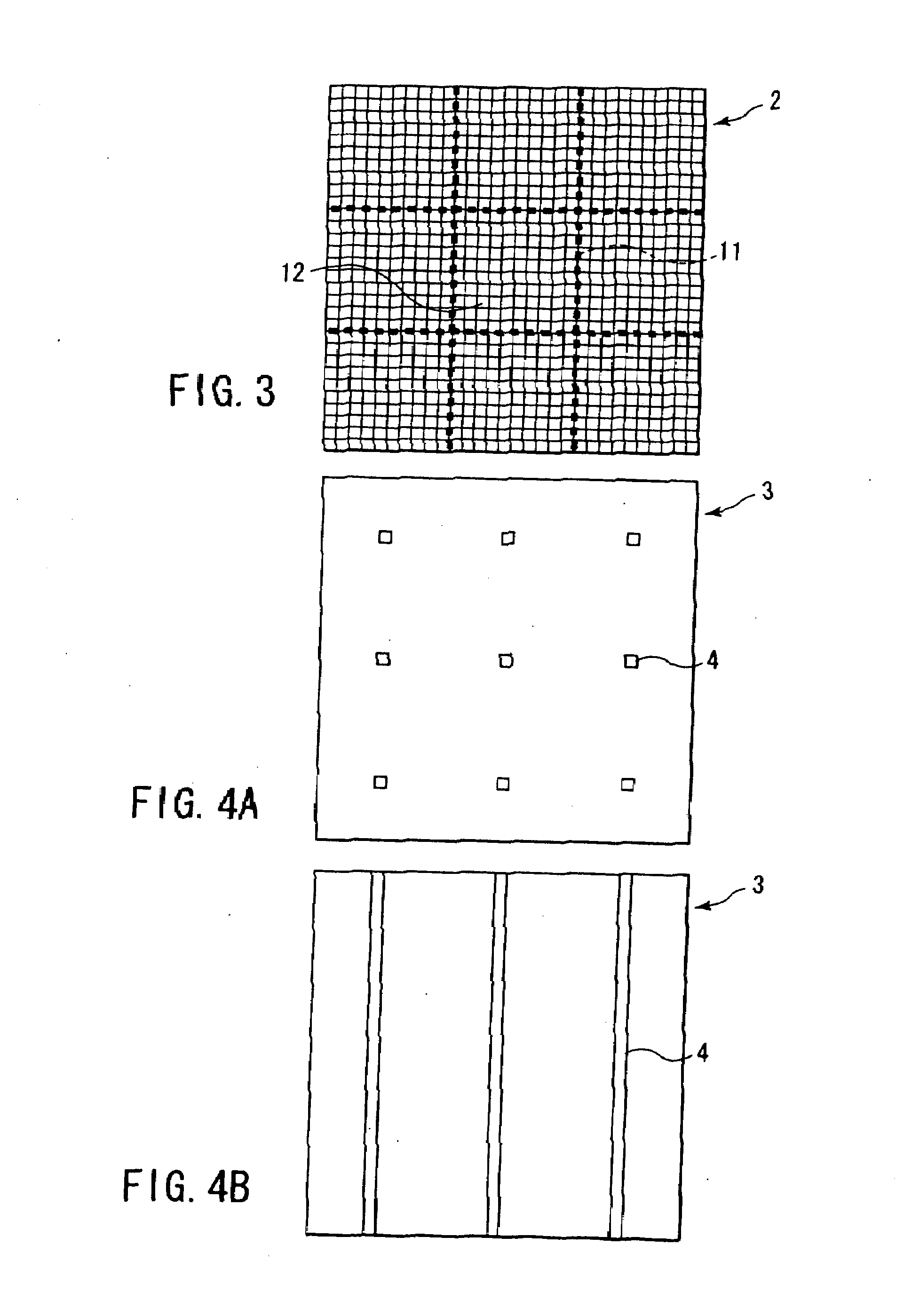Three-dimensional image display apparatus, method of distributing elemental images to the display apparatus, and method of displaying three-dimensional image on the display apparatus
a display apparatus and three-dimensional image technology, applied in the direction of instruments, static indicating devices, optical elements, etc., can solve the problems of limited viewing zone along the viewing direction, obvious differences in the display apparatus of multi-view systems, and observation of three-dimensional images, so as to minimize the observation angle and expand the viewing zone
- Summary
- Abstract
- Description
- Claims
- Application Information
AI Technical Summary
Benefits of technology
Problems solved by technology
Method used
Image
Examples
example 1
[0173]In the present example, only the horizontal parallax effective for the stereoscopic viewing zone is imparted. For a liquid crystal display device, QUXGA-LCD (pixel number 3200×2400, screen size 422.4 mm×316.8 mm) may be used. A minimum driving unit includes sub-pixels of R, G, B. Three sub-pixels of R, G, B arranged side by side usually form one pixel (triplet), but the sub-pixels of R, G, B arranged in a longitudinal direction were handled as one pixel in order to increase the number of horizontal pixels in the display unit of the present example. That is, parallax image information are arranged at the sub-pixel pitch in the horizontal direction. The sub-pixel has a transverse width of, for example, 44 μm and a vertical length of, for example, 132 μm. A backlight is disposed on the rear surface of the display unit. On an observer's side, transmission control sections are provided in the form of slits each having a width of, for example, 44 μm, and the slits were arranged at a...
example 2
[0177]When the elemental images are arranged in the constitution similar to that of Example 1 by the judgment method of Equation (11) in accordance with the algorithm of FIG. 19, completely the same elemental image group as that of Example 1 is obtained.
example 3
[0178]The reference distance is changed to 1.5 m in the constitution and algorithm similar to those of Example 1. The total number of parallaxes is 28, which is decreased as compared with Example 1, and the parallax number N(Xp, Xs) relating to the two-dimensional image information constituting the elemental image disposed in the vicinity of the middle disposed opposite to the center of the viewing zone in the display unit is from 6 to 21. On the other hand, for the elemental image for the slit 4 positioned second counted from the screen left end, the elemental image is generated from the N(Xp, Xs)=0 to 15 parallax images. For the elemental image for the slit 4 positioned second counted from the right end, the elemental image is generated from N(Xp, Xs)=12 to 27 parallax images. Moreover, for the sub-pixel group displaying the elemental image for the slit 4 positioned second counted from the screen left end, there are 14 sub-pixels on the left side of the normal Op positioned in the...
PUM
| Property | Measurement | Unit |
|---|---|---|
| refractive index | aaaaa | aaaaa |
| size | aaaaa | aaaaa |
| transmission | aaaaa | aaaaa |
Abstract
Description
Claims
Application Information
 Login to View More
Login to View More - R&D
- Intellectual Property
- Life Sciences
- Materials
- Tech Scout
- Unparalleled Data Quality
- Higher Quality Content
- 60% Fewer Hallucinations
Browse by: Latest US Patents, China's latest patents, Technical Efficacy Thesaurus, Application Domain, Technology Topic, Popular Technical Reports.
© 2025 PatSnap. All rights reserved.Legal|Privacy policy|Modern Slavery Act Transparency Statement|Sitemap|About US| Contact US: help@patsnap.com



